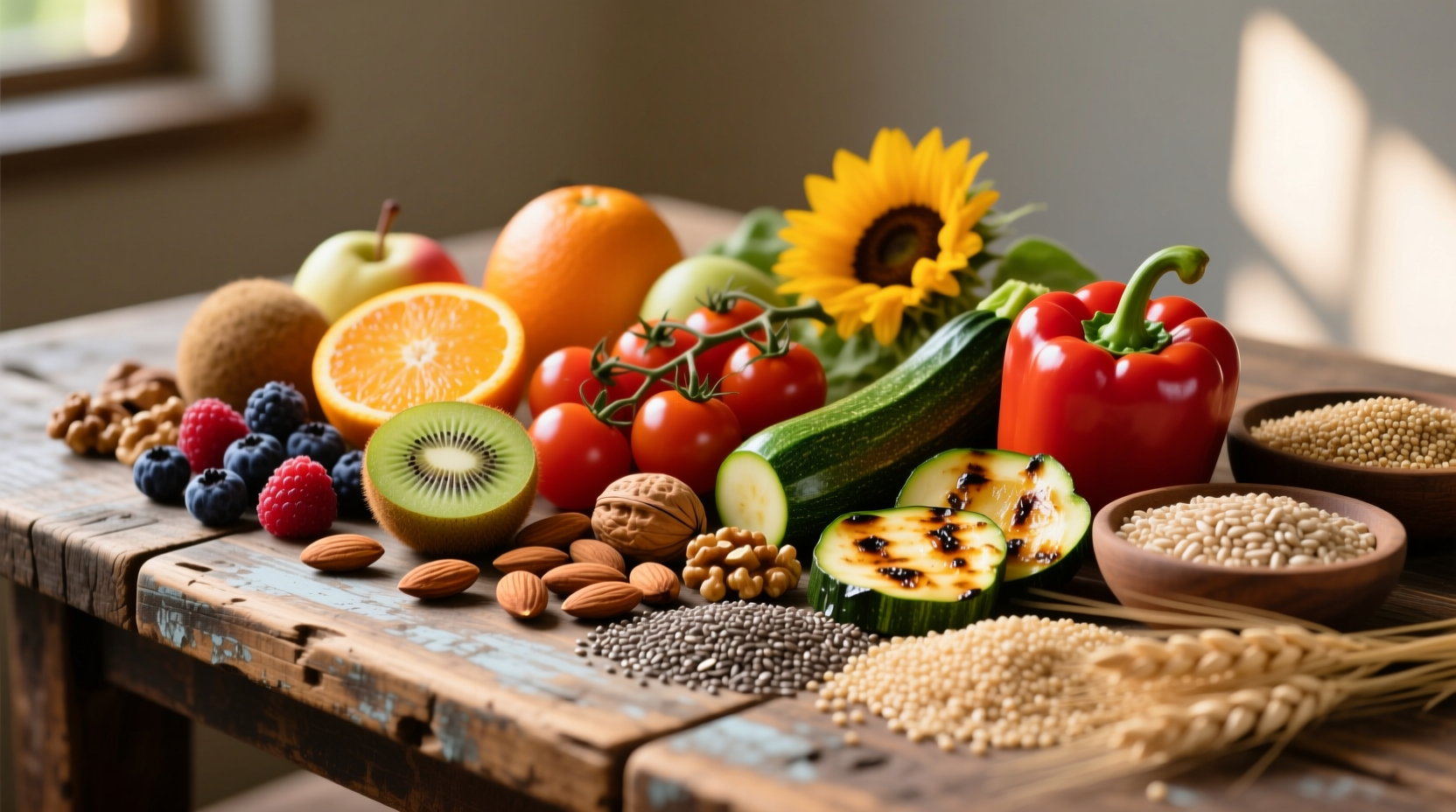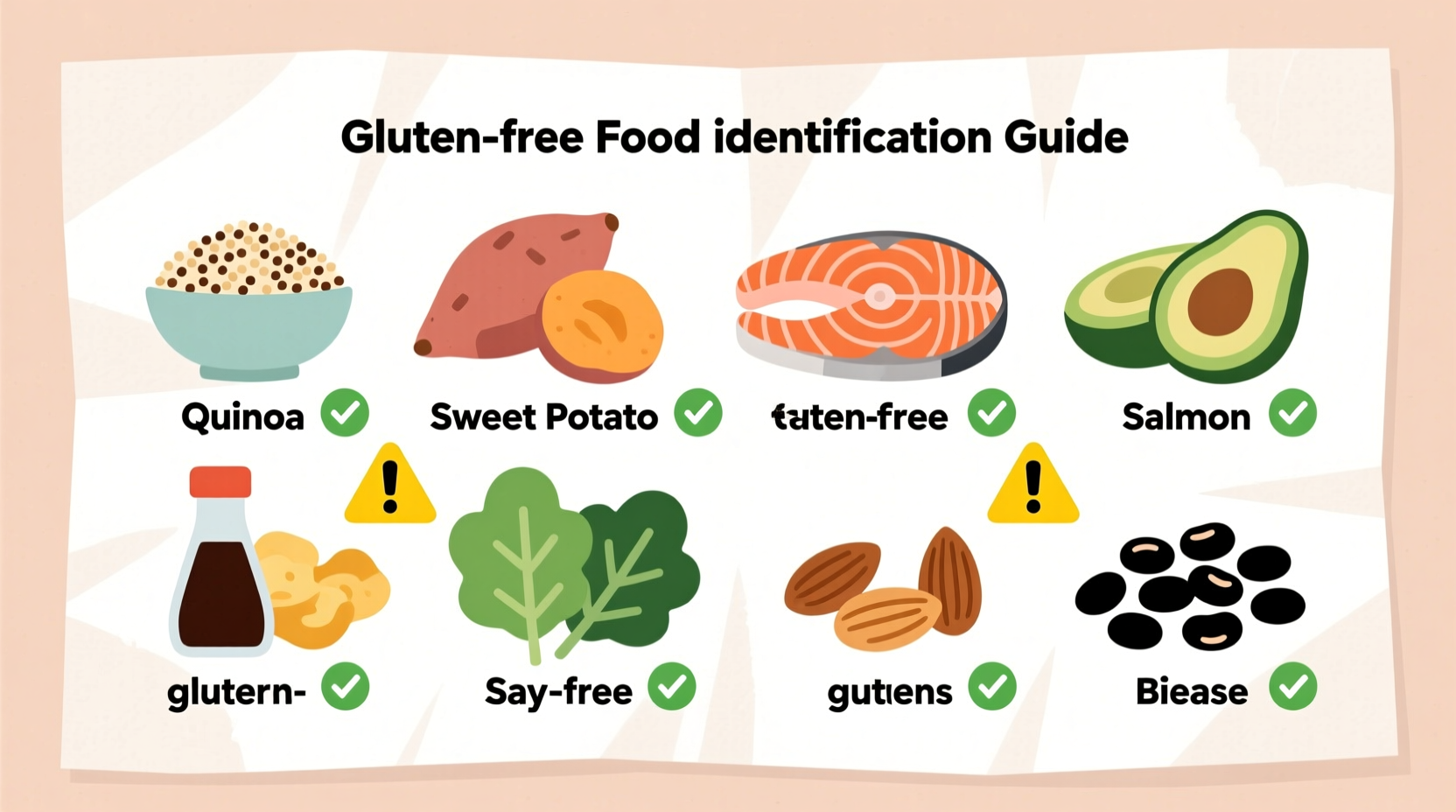Discover exactly what food is gluten free with this practical guide that helps you navigate grocery aisles and restaurant menus with confidence. Whether you're newly diagnosed with celiac disease, managing gluten sensitivity, or cooking for someone who needs to avoid gluten, this comprehensive resource delivers clear, actionable information you can trust immediately.
Understanding Gluten and Who Needs to Avoid It
Gluten is a protein composite found in wheat, barley, and rye that gives dough its elastic texture. For people with celiac disease—an autoimmune disorder affecting approximately 1% of the global population—consuming gluten triggers an immune response that damages the small intestine. Those with non-celiac gluten sensitivity (estimated at 6-10% of the population) experience similar symptoms without the autoimmune reaction.
The U.S. Food and Drug Administration (FDA) requires that products labeled "gluten-free" contain less than 20 parts per million (ppm) of gluten, the lowest level that can be consistently detected in foods. This standard aligns with recommendations from the Celiac Disease Foundation and ensures safety for most people with gluten-related disorders.
Naturally Gluten-Free Foods You Can Trust
Many whole, unprocessed foods are naturally gluten-free. Building your diet around these foundational foods provides the safest approach for maintaining a gluten-free lifestyle:
- Fresh produce: All fruits and vegetables in their natural state
- Proteins: Unprocessed meats, poultry, fish, eggs, and legumes
- Dairy: Milk, cheese, yogurt, and butter (without added ingredients)
- Gluten-free grains: Rice, corn, quinoa, buckwheat, millet, sorghum, teff
- Fats and sweeteners: Oils, butter, honey, pure maple syrup
| Gluten-Free Grains & Starches | Common Gluten-Containing Grains |
|---|---|
| Rice (all varieties) | Wheat (including spelt, kamut, farro) |
| Corn and cornmeal | Barley |
| Quinoa | Rye |
| Buckwheat | Triticale |
| Amaranth | Malt (usually from barley) |
Hidden Sources of Gluten to Watch For
Processed foods often contain hidden gluten through additives, thickeners, or cross-contamination. Be vigilant with these commonly problematic items:
- Sauces and gravies (often thickened with wheat flour)
- Processed meats like sausages and deli meats
- Seasoned snack foods and flavored chips
- Imitation seafood products
- Some soy sauces and marinades
- Certain alcoholic beverages like beer and malt vinegar
According to research published in the Journal of Gastroenterology and Hepatology, cross-contamination remains a significant concern, with studies showing that even gluten-free labeled products can sometimes exceed safe thresholds when processed in facilities that also handle wheat.
Reading Labels Like a Pro
Effective label reading is your most powerful tool for maintaining a gluten-free diet. Look for these key indicators:
- Certification logos: GFCO (Gluten-Free Certification Organization) or NSF gluten-free certification
- "Gluten-free" claim: Verified products meeting FDA standards
- "May contain" warnings: Indicates potential cross-contamination risk
Always check for hidden gluten sources in ingredient lists, including terms like:
- Malt or malt flavoring
- Dextrin or modified food starch (unless specified as corn or potato)
- Soy sauce (unless tamari or gluten-free labeled)
- Hydrolyzed vegetable protein (if derived from wheat)

Building a Safe Gluten-Free Pantry
Stocking your kitchen with reliable gluten-free staples makes meal planning straightforward. Focus on these essentials:
- Certified gluten-free oats (regular oats often have cross-contamination)
- Rice, quinoa, and corn-based pasta
- Gluten-free all-purpose flour blends
- Natural nut butters (check for added ingredients)
- Plain spices and herbs (avoid spice blends which often contain wheat)
When shopping for gluten-free alternatives, remember that "gluten-free" doesn't automatically mean healthier. Many gluten-free products contain added sugars and fats to compensate for texture changes. Focus on naturally gluten-free whole foods as the foundation of your diet.
Dining Out Safely with Confidence
Eating at restaurants requires extra precautions. Follow these practical steps:
- Call ahead to ask about gluten-free menu options and kitchen protocols
- Choose restaurants with dedicated gluten-free menus or clear understanding of cross-contamination
- Ask specific questions: "Is the grill cleaned between gluten and gluten-free items?"
- Be cautious with fried foods (shared fryers are common contamination sources)
- Consider carrying a chef card explaining your needs in detail
Research from the Beyond Celiac organization shows that Mexican, Thai, and Japanese cuisines often offer naturally gluten-free options, though you must verify ingredients as soy sauce and certain sauces commonly contain gluten.
Common Gluten-Free Diet Misconceptions
Several myths persist about gluten-free eating that can lead to confusion:
- Myth: Gluten-free means automatically healthier
Fact: Many gluten-free products have similar or higher calorie and sugar content than their gluten-containing counterparts - Myth: All oats are gluten-free
Fact: Oats are naturally gluten-free but commonly contaminated during processing; look for certified gluten-free oats - Myth: A little gluten won't hurt someone with celiac disease
Fact: Even small amounts can cause intestinal damage in people with celiac disease
When Gluten-Free Labeling Matters Most
Understanding context boundaries helps you prioritize your vigilance. For people with celiac disease, strict avoidance is medically necessary, while those with gluten sensitivity may tolerate occasional exposure. However, the Centers for Disease Control and Prevention emphasizes that consistent gluten avoidance is crucial for those diagnosed with celiac disease to prevent long-term complications.
Always consult with a healthcare provider or registered dietitian before starting a gluten-free diet, as unnecessary restriction can lead to nutrient deficiencies. Proper diagnosis is essential, as self-diagnosing and implementing a gluten-free diet before testing can interfere with accurate celiac disease diagnosis.
Practical Resources for Ongoing Support
Stay informed with these trusted resources:
- Celiac Disease Foundation (celiac.org) - Educational materials and support groups
- Gluten Intolerance Group (gluten.org) - Certification program and community support
- Find Me Gluten Free app - Restaurant finder with user reviews
- National Celiac Association (nationalceliac.org) - Advocacy and education











 浙公网安备
33010002000092号
浙公网安备
33010002000092号 浙B2-20120091-4
浙B2-20120091-4